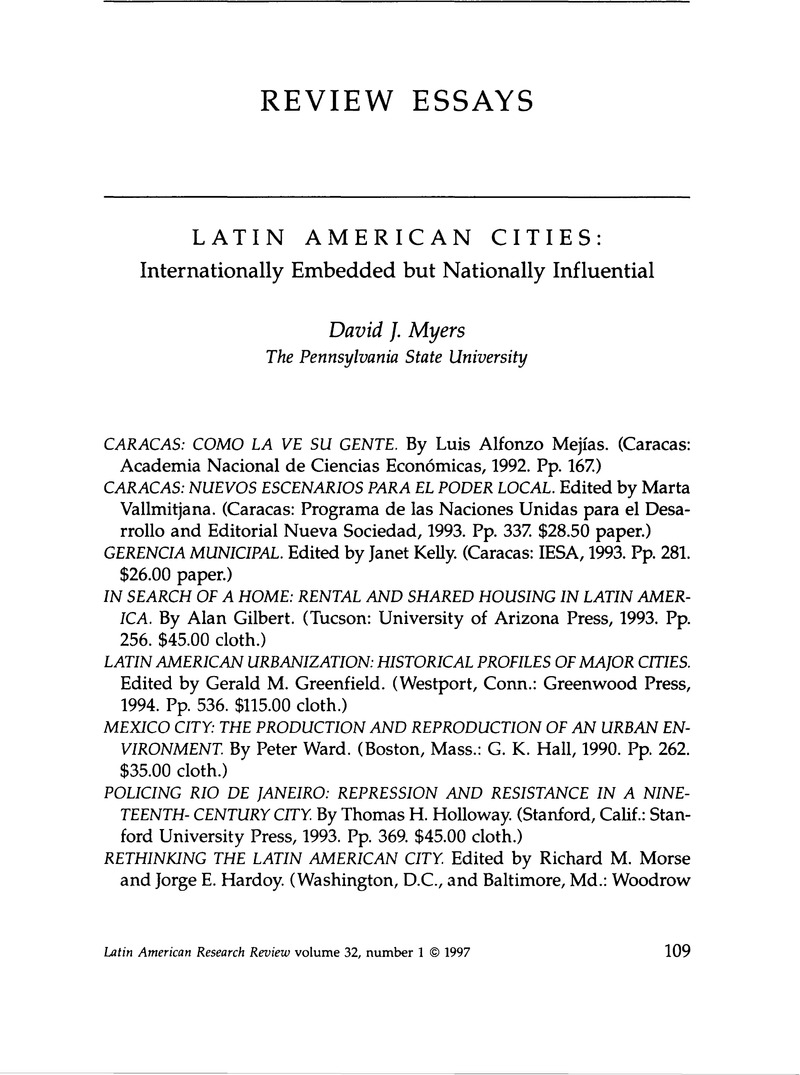Published online by Cambridge University Press: 05 October 2022

1. For a detailed account of these trends, see United Nations, World Urbanization Prospects: The 1994 Revision (New York: United Nations, 1995).
2. As examples, see David Collier, Squatters and Oligarchs: Authoritarian Rule and Policy Change in Peru (Baltimore, Md.: Johns Hopkins University Press, 1976); Susan Eckstein, The Poverty of Revolution: The State and the Urban Poor in Mexico (Princeton, N.J.: Princeton University Press, 1977); Robert J. Ferry, The Colonial Elite of Early Caracas: Formation and Crisis, 1567–1767 (Berkeley and Los Angeles: University of California Press, 1989); Alan Gilbert and Peter Ward, Housing, the State, and the Poor: Policy and Practice in Three Latin American Cities (Cambridge: Cambridge University Press, 1985); Janice Perlman, The Myth of Urban Marginality (Berkeley and Los Angeles: University of California Press, 1976); “Dependencia, cambio social y urbanización en Latinoamérica,” edited by Aníbal Quijano, a special issue of Revista Mexicana de Sociología 30 (1969); James R. Scobie, Buenos Aires: Plaza to Suburb (New York: Oxford University Press, 1974); and John Walton, Elites and Economic Development: Comparative Studies in the Political Economy of Latin American Cities (Austin: University of Texas Press, 1977).
3. The primate pattern of cities occurs when the major central place of a state or region is also its capital. This kind of center tends to dominate the state or region in such a way that the development of secondary centers is delayed and constrained. For more discussion of this topic, see S. N. Eisenstadt and A. Shachar, Society, Culture, and Urbanization (Newbury Park: Sage Publications, 1987), 39–49.
4. This hypothesis was advanced in a 1986 CBS television documentary hosted by Bill Moyers, “One River, One Country: The U.S.-Mexico Border.”
5. Little information is available on Havana's development since 1959.